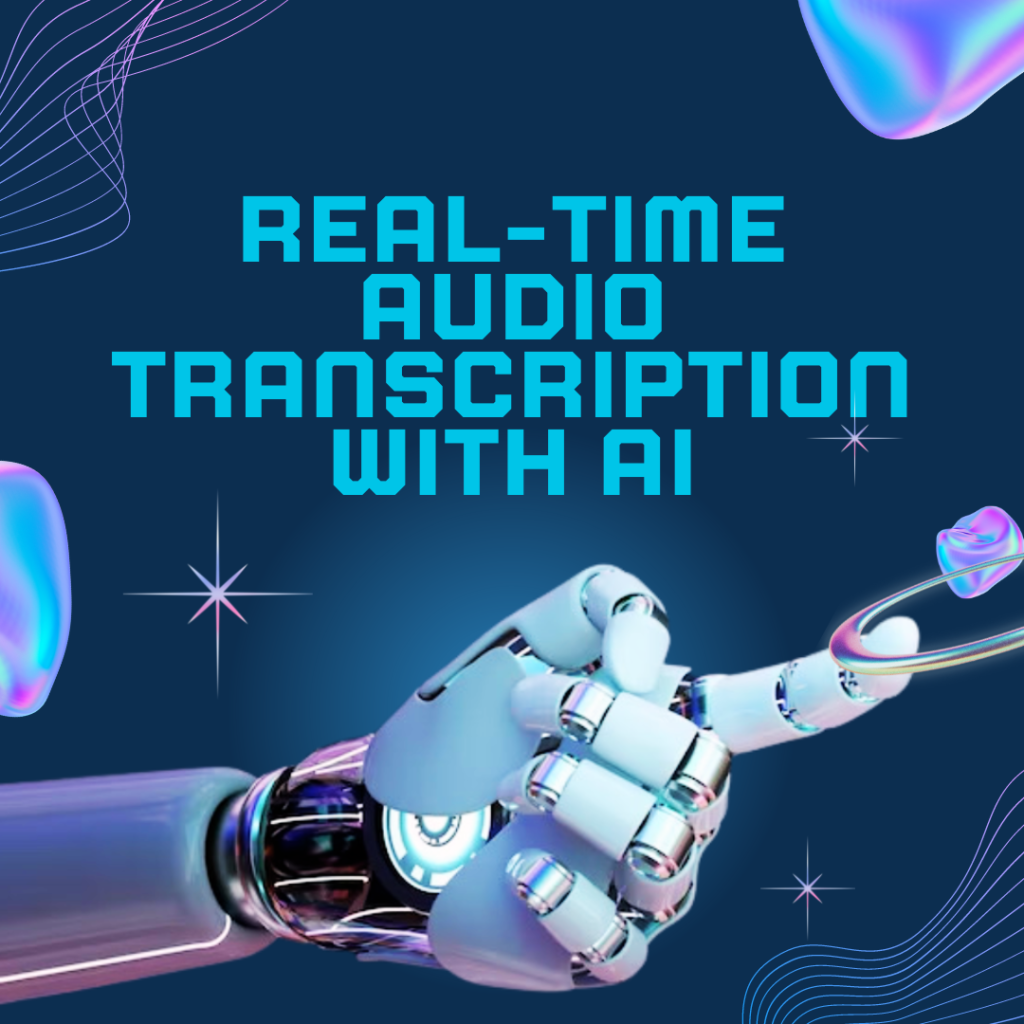Real-Time Audio Transcription with AI

Real-time audio transcription involves converting spoken language into text as the words are being spoken, a process that has significant implications across various industries. AI technologies, particularly advancements in machine learning (ML) and natural language processing (NLP), have dramatically enhanced the capabilities of real-time audio transcription. This technology is transforming communication, accessibility, and data processing by providing instant, accurate transcriptions. Below are some key points and detailed paragraphs explaining the importance, applications, and challenges of real-time audio transcription with AI.
Importance of Real-Time Audio Transcription with AI
Enhanced Accessibility: Real-time audio transcription greatly improves accessibility for individuals with hearing impairments, allowing them to follow conversations, presentations, and media content as they happen. This inclusivity is crucial in educational settings, public events, and digital media.
Efficiency in Business Processes: In corporate environments, real-time transcription aids in efficient documentation of meetings, conferences, and interviews. It ensures that all spoken content is captured accurately and promptly, facilitating better record-keeping and reducing the need for manual note-taking.
Improved Customer Experience: AI-driven real-time transcription can enhance customer service experiences by providing instant transcripts of customer interactions. This can help in training AI models to respond more effectively and personalize customer support services.
Applications of Real-Time Audio Transcription
Media and Entertainment:
- Live Subtitling: AI transcription is used for live broadcasting of subtitles, making TV shows, news, and events accessible to a broader audience, including those with hearing impairments.
- Podcast and Video Transcription: Real-time transcription helps in creating searchable and accessible content for podcasts and videos, enhancing user engagement and content reach.
Education:
- Lecture Transcriptions: Real-time transcription services can transcribe lectures and seminars, making it easier for students to follow along and review the material later. This is particularly beneficial for remote learning environments.
- Accessibility for Students: Students with disabilities can benefit significantly from real-time transcriptions of classroom discussions and lectures, ensuring they receive the same information as their peers.
Legal:
- Court Reporting: Real-time transcription in legal settings provides instant transcripts of court proceedings, depositions, and arbitration, facilitating faster and more efficient legal processes.
- Legal Documentation: Lawyers can use real-time transcription for dictating and transcribing legal documents, contracts, and case notes, streamlining their workflow.
Challenges in Real-Time Audio Transcription
- Accuracy in Noisy Environments: One of the primary challenges in real-time transcription is maintaining accuracy in noisy environments. Background noise can interfere with the transcription process, leading to errors and misinterpretations.
- Handling Multiple Speakers: Differentiating between multiple speakers and accurately attributing speech can be complex. AI models need to effectively manage speaker diarization to provide clear and organized transcriptions.
- Accents and Dialects: Variations in accents, dialects, and speech patterns can pose challenges for AI transcription systems. Ensuring that the models are trained on diverse datasets to handle these variations is essential for maintaining accuracy.
- Latency and Processing Speed: Achieving low latency in real-time transcription is critical. The system must process audio input and generate text output almost instantaneously, which requires significant computational resources and efficient algorithms.
- Data Privacy and Security: Transcribing sensitive information in real-time, such as medical records or legal proceedings, raises concerns about data privacy and security. Ensuring compliance with data protection regulations and implementing robust security measures is crucial.
Future Prospects
Advancements in AI and ML: Continuous advancements in AI and ML will likely lead to more sophisticated transcription models capable of higher accuracy and better handling of complex speech patterns, accents, and noisy environments.
Integration with Other Technologies: Real-time transcription can be integrated with other AI technologies such as sentiment analysis, entity recognition, and summarization to provide more comprehensive and insightful data processing solutions.
Personalization: Future transcription systems may offer personalized experiences by adapting to individual users’ speech patterns and preferences, further improving accuracy and user satisfaction.
Broader Language Support: Expanding the range of languages and dialects supported by real-time transcription systems will make the technology more accessible globally, catering to diverse linguistic needs.
Conclusion
Real-time audio transcription with AI is a transformative technology with wide-ranging applications across various sectors. It enhances accessibility, efficiency, and customer experience by providing instant, accurate transcriptions. Despite challenges like noise interference, multiple speakers, and data privacy concerns, continuous advancements in AI and ML promise to address these issues and further improve the capabilities of real-time transcription systems. As the technology evolves, it will unlock new possibilities for communication, data analysis, and accessibility, making it an indispensable tool in our increasingly digital world.
--------------------------------
Guestbeat.com Notice!
Audience discretion is needed, Read TOS.
Submit Guest Post / Read Latest / Category List
App & Rate-Us / Subscribe Daily Newsletter (FREE)
Related Posts

Top Features of MecKey’s Filtration and Concentration Equipment

Sony Phones UAE: Top Feature Highlights, Design, and More!

